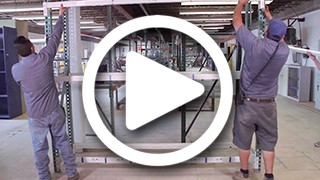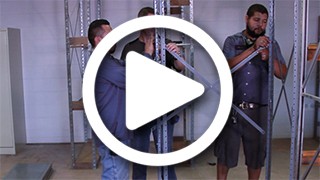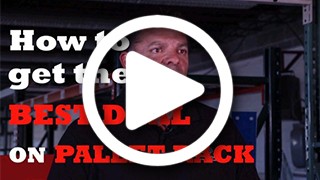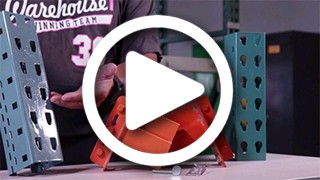Why Should I Buy Push-Back Rack?
Push back rack utilizes the simple force of gravity to move stored pallets forward on the rack for picking. In a push back racking system, the pallets come forward to the lift truck instead of the lift truck driving in to access the pallets.
With higher storage density and less aisle space, push-back rack systems can store as much as 90% more pallets than selective rack.
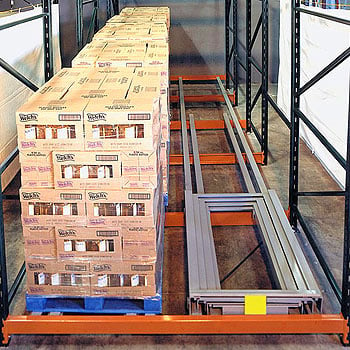
A series of up to 5 nested carts are mounted on slightly inclined tracks attached to the standard pallet rack. Pallets are front loaded on the carts and, as each new pallet is loaded, the previously loaded cart is pushed backwards, deeper into the rack. When all the carts are filled and pushed back, the leading pallet is loaded directly onto the pallet rack rails, securing the row of carts. As each pallet is subsequently pulled off by the lift truck, the cart following it rolls forward naturally, bringing the next pallet to the front-most position for easy, immediate access.
How Push-Back Rack Works
Push-back racking systems combine large stock volume with ready accessibility. Push-back rack maximizes square footage for product storage—not for creating aisles. With conventional selective pallet racks, about 80% of the available warehouse floor space is consumed by aisles. The reduced aisle requirements of push-back pallet rack cut aisle floor space to just 30%. Unlike the limitations of standard selective racks that can only store one pallet deep, a push-back system allows you to go as deep as six pallets in a single lane. Push-back rack systems consist of uprights, beams, rails & carts. Pallets sit on carts that are pushed back on rails into the system. The last pallet in is stored on the rails.
Benefits of Push-Back Racking
This can translate into as much as 90% more storage capacity than a selective rack, while still retaining convenient access to a variety of SKUs. When compared to drive-in racks, push-back racks offer up to 400% more selectivity. They are best suited to stock with a medium turnover and ideally containing at least two or more pallets per SKU. Push-back pallet rack is quickly becoming the preferred method of high-density storage. Here are the major advantages:
- Diverse SKUs can be stored on multiple levels for quick access.
- Interlocking or “nesting” carts avoid jamming and the potential of product damage.
- Enhanced selectivity combined with high density equals faster pick rates and greater productivity of pickers.
- Rolling carts are often color coded for at-a-glance visual inventory.
- Each level can be accessed individually, maximizing the available space by complete utilization of the vertical cube.
- Push-back pallet racking system is optimized for LIFO (last in, first out) storage.
- Because the lift truck doesn't have to drive into the rack, the risk of damage to the system is reduced.
- The space-saving configuration of a push-back pallet system may preclude the need to expand into larger warehouse facilities.
- Push-back rack is easily installed and readily modified to adapt to changing storage requirements.
- The gravity-operated system is nearly maintenance free and has no powered components.
Drawbacks
Push-back rack allows up to 400% more selectivity than drive-in rack. However, drive-in & drive-through systems can accomodate both LIFO and FIFO storage, while push-back is limited to just LIFO storage. Like any storage system, a push-back pallet rack is not a perfect fit for all applications. Drawbacks include:
- In a standard, unmodified pushback configuration, first in, first out (FIFO) utilization is not feasible.
- The cost per pallet position of a pushback system is about three times that of standard selective rack.
Final Word
Push-back pallet rack is an excellent storage option. You must balance initial cost with greatly reduced space requirements. If the conclusion is space trumps initial purchase cost, push-back rack is a great choice.
